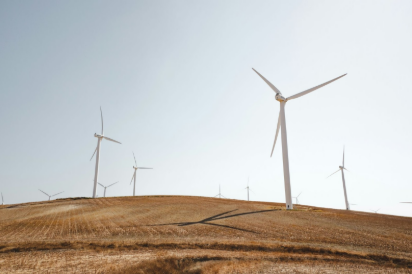Anyone standing outside on a gusty day has experienced the power of wind.
The strength of this natural movement of air has been harnessed as an energy source in agriculture for more than a thousand years.
But the wind energy generated today is used for much more than moving water or grinding grain.
EASY, BREEZY ENERGY
Wind energy is steadily becoming a reliable source of power for Australian cities and towns.
It’s created by harnessing gusts and gales using wind turbines. When the wind blows, it turns giant blades – similar to an airplane propeller – at the top of the turbine.
The rotation of the blades spins an electric generator, producing electricity that is fed into the power grid.
Caption: Wind turbines use gusts to spin a generator, creating electricity
Credit: Waldemar via Unsplash
Modern commercial wind turbines are similar to the traditional windmills used in farming, but they are significantly larger. These turbines can stand up to 150 metres tall, and each blade can span up to 90 metres long.
Placing dozens of these huge machines in a windy location – also known as a wind farm – can produce enough energy to power entire cities.
HARVESTING THE WIND
In WA, the regional city of Albany benefits from renewable energy produced by a wind farm.
On the outskirts of town, 18 turbines face the Southern Ocean, where wind gusts can reach more than 60km per hour.
The powerful ocean breeze enables the wind farm to generate more than 35 megawatts of electricity, equal to 80% of Albany’s annual power needs.
The Albany wind farm is one of 20 currently operating across WA, with hundreds of turbines scattered across Australia and plans to bring more online in coming years.
WINDING UP FOR A CLEAN FUTURE
In WA alone, there are more than 30 wind projects in the pipeline to help deliver renewable energy to the state.
Caption: Wind power generates more than a third of Australia’s renewable energy
Credit: Jason Mavrommatis via Unsplash
Wind power currently makes up 35% of total generated renewable energy in Australia, second only to solar power.
As new wind farms are developed, this figure is expected to grow to 50% by 2030, which will help the nation as it aims to reduce emissions and reach net-zero targets.









